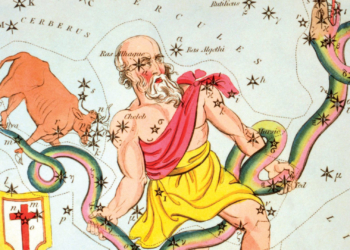
By Elias Marat | TheMindUnleashed.com
Mere days after it mysteriously popped up on a hillside near the Carpathian mountain range, the Romanian monolith – which bore a striking resemblance to its Utah counterpart – has suddenly disappeared.
The shiny metal monolith, which was discovered late last week around the same time that the monolith in Utah vanished from its remote desert location, was placed near a historic Dacian fortress built in B.C. times. Little is known about who erected the three-sided structure in the location, why it was installed, or if there was any connection to the Utah monolith.
The shiny pillar was found just last Thursday on Batca Doamnei Hill in the city of Piatra Neamt in the country’s northeastern Neamt County, several yards from the Dacian fortress Petrodava, an important archaeological landmark and fort that was built by the people of ancient Dacia between 82 B.C. and 106 A.D.
The monolith was just a few yards from the old stronghold, with one side facing Mount Ceahlău, a famous Carpathian mountain listed as one of the country’s Seven Natural Wonders and known to locals as the Holy Mountain.
However, on Monday the monolith vanished from the site and left only a shallow, square-shaped hole and pile of rubble behind, in a video posted by local media outlet Jurnal FM.
The disappearance of the monolith also coincided with the night of Saint Andrews Day, a holiday celebrating a saint who was the brother of Saint Peter and is considered the protector of Romania due to his proselytizing activities in the ancient province of Scythia, which includes parts of present-day Romania.
The night is also characterized by a number of traditions and superstitions of pagan origin that predate the arrival of Christianity in the region and is seen by many as the Romanian equivalent of Halloween and as a night filled with roaming spirits, werewolves, and people using garlic to ward off evil spells, ghosts, and curses, according to Romania Insider.
“The monolith found near the archaeological site of an old Dacian Stronghold disappeared on the night of Saint Andrew when reportedly, a bright light surrounded the object,” reported Jurnal FM.
“Locals thought the light came from a car, but the light pointed towards the sky,” the local report mysteriously added.
It remains unknown how exactly the silver monolith was installed in its Carpathian location, but many social media users joked that the Romanian version was a sort of “Wish App” equivalent to its Utah counterpart, with this monolith having a decidedly more scrappy, rough façade filled with doodle-like scrawls.
“The aliens who have planted this monolith should polish their welding skills,” one user commenting on the Facebook post by The Mind Unleashed.
The disappearance comes after local officials complained about the unauthorized installation of the silver structure.
“We have started looking into the strange appearance of the monolith,” said Neamt Culture and Heritage official Rocsana Josanu. “It is on private property, but we still don’t know who the monolith’s owner is yet. It is in a protected area on an archaeological site.”
“Before installing something there, they needed permission from our institution, one that must then be approved by the Ministry of Culture,” Josanu added.
The mysterious three-sided structure’s disappearance comes just a few days after the monolith in Utah was removed from its remote desert location by an “unknown party,” local authorities said over the weekend.
The discovery of the monolith by Utah public safety workers in the southwestern U.S. state generated significant viral buzz, with many comparing the monolith to those that trigger massive leaps in human progress in the classic Stanley Kubrick sci-fi film, “2001: A Space Odyssey.”
Others bemoaned the discovery of the object in the turbulent year 2020, with some social media users complaining that the discovery of the monolith had triggered their anxiety over worsening fortunes in the year, including a possible extraterrestrial invasion.
However, recent clues may point to a much more down-to-earth explanation behind the disappearance of Utah.
An Instagram post by photographer Ross Bernards has revealed that a group of four men arrived at the site not long after he had snapped some shots of the viral structure. The men had brought a wheelbarrow with them and pushed against the structure until it fell over.
“They quickly broke it apart as they were carrying the wheelbarrow that they had brought one of them looked back at us and said ‘leave no trace,’” Bernards explained. “If you’re asking why we didn’t’s stop them well, they were right to take it out. We stayed the night and the next day hiked to a hilltop overlooking the area where we say at least 70 different cars (and a plane) in and out. Cars parking everywhere in the delicate desert landscape.”
“Mother Nature is an artist, it’s best to leave the art in the wild to her,” he added.
Another Instagram user explains that the men left behind a puddle of urine where the structure had previously stood and scrawled “By B*tch!” in the dirt.
It all seems like a rather unceremonious end to a structure that kindled the imagination of millions of online users.
However, the disappearance of the structures still has us wondering: where, and when, will the next monolith be found?















